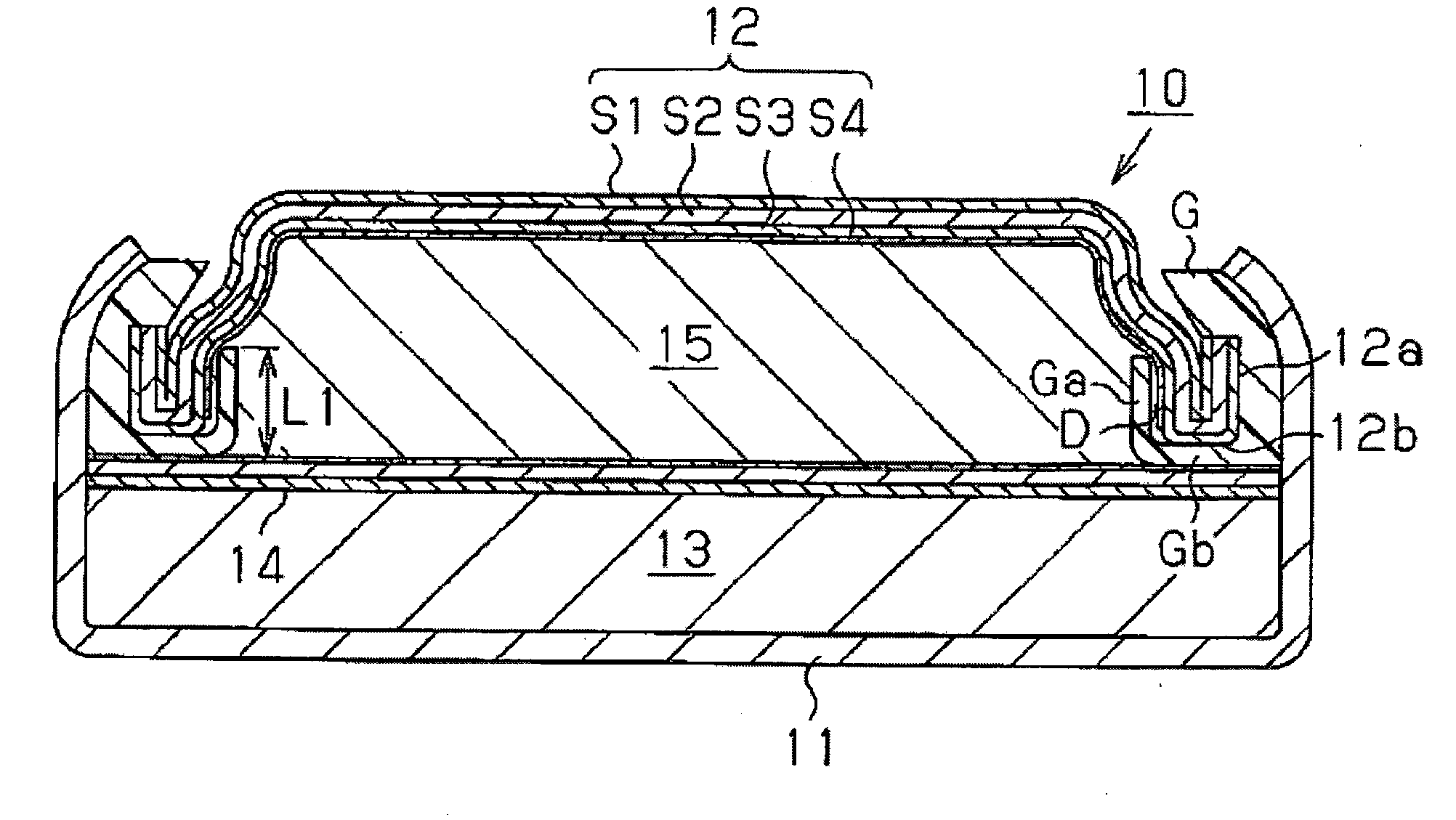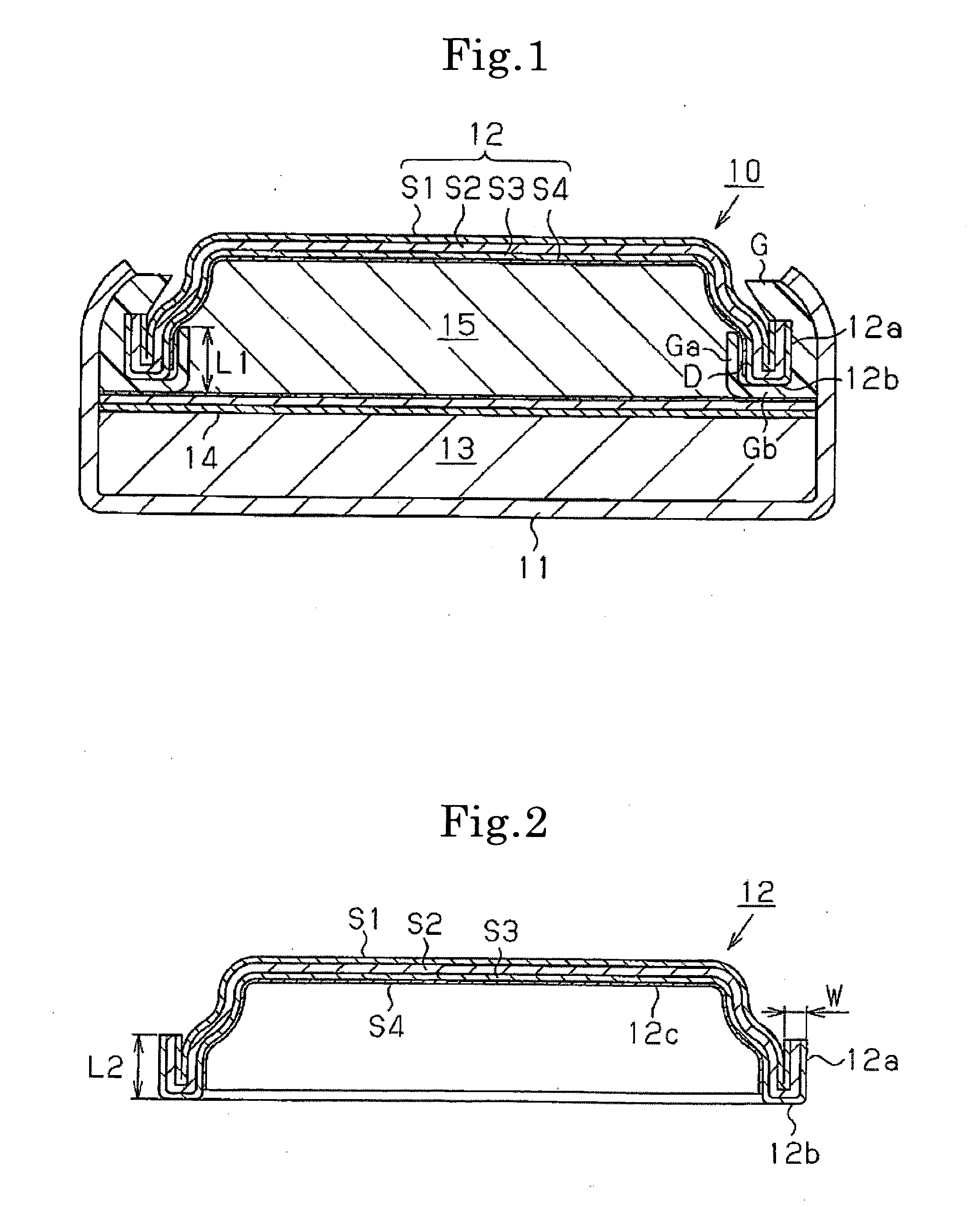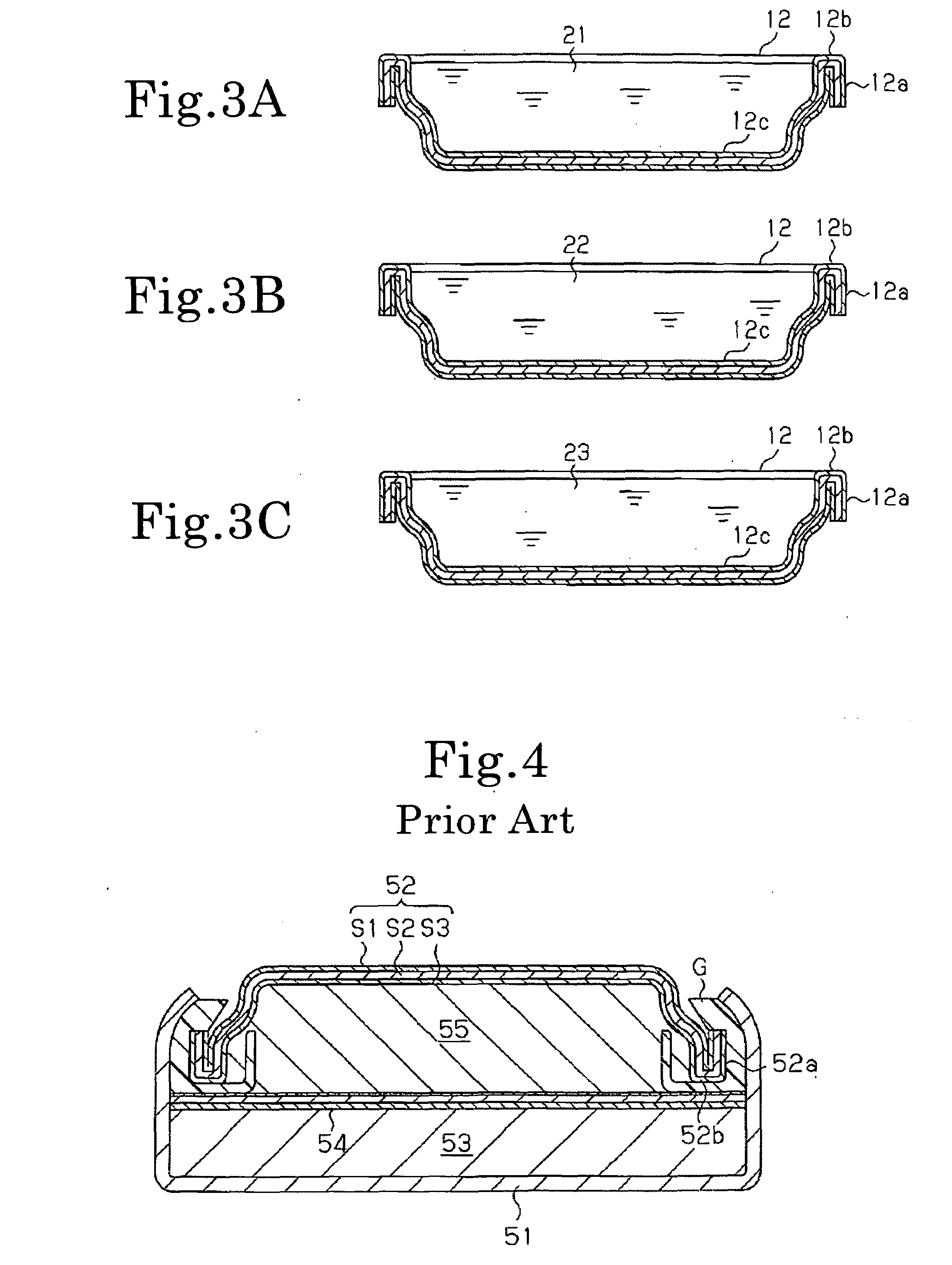Method for producing alkaline battery, and alkaline battery
a technology of alkaline batteries and alkaline batteries, which is applied in the direction of cell components, final product manufacturing, sustainable manufacturing/processing, etc., can solve the problems of reducing capacity retention, reducing the capacity retention rate, and suppressing the generation of hydrogen
- Summary
- Abstract
- Description
- Claims
- Application Information
AI Technical Summary
Benefits of technology
Problems solved by technology
Method used
Image
Examples
example 1
[0046]As Example 1, an SR626SW battery having the structure shown in FIG. 1 was produced. A three-layer clad material having a thickness W of 0.2 mm and comprising a nickel layers S1, a stainless steel layer S2 of SUS304, and a collector layer S3 of copper was pressed to give a negative electrode can 12 having a folded portion 12a and a folded bottom 12b. Then, as shown in FIG. 3A, a mixed aqueous solution 21 of sulfuric acid and hydrogen peroxide was applied dropwise onto a collecting inner surface 12c of the collector layer S3 of the negative electrode can 12 to chemically polish only the collecting inner surface 12c area, followed by washing with water.
[0047]Subsequently, as shown in FIG. 3B, a polyaniline-based conductive polymer solution 22 was applied dropwise to perform surface treatment. The conductive polymer solution 22 is then collected, followed by washing with water and drying.
[0048]Subsequently, as shown in FIG. 3C, an electroless tin plating liquid 23 was applied drop...
example 2
[0053]The structure in Example 2 is the same as in Example 1, except that the width of the space D between the inner peripheral surface of the folded portion 12a of the negative electrode can 12 and the central-side protruding portion Ga of the gasket G was set at 0.10 mm, and the length L1 of the protruding portion Ga was set at ⅔ the length L2 of the folded portion 12a of the negative electrode can 12.
example 3
[0054]The structure in Example 3 is the same as in Example 1, except that the width of the space D between the inner peripheral surface of the folded portion 12a of the negative electrode can 12 and the central-side protruding portion Ga of the gasket G was set at 0.05 mm, and the length L1 of the protruding portion Ga was set at ½ the length L2 of the folded portion 12a of the negative electrode can 12.
PUM
| Property | Measurement | Unit |
|---|---|---|
| thickness | aaaaa | aaaaa |
| temperature | aaaaa | aaaaa |
| thickness | aaaaa | aaaaa |
Abstract
Description
Claims
Application Information
 Login to View More
Login to View More - R&D
- Intellectual Property
- Life Sciences
- Materials
- Tech Scout
- Unparalleled Data Quality
- Higher Quality Content
- 60% Fewer Hallucinations
Browse by: Latest US Patents, China's latest patents, Technical Efficacy Thesaurus, Application Domain, Technology Topic, Popular Technical Reports.
© 2025 PatSnap. All rights reserved.Legal|Privacy policy|Modern Slavery Act Transparency Statement|Sitemap|About US| Contact US: help@patsnap.com



